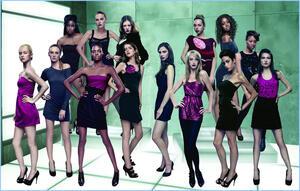Will America's Next Top Model Be Modern Orthodox?
There has been a lot of talk lately in the Jewish community about a particular contestant on the CW’s reality hit America’s Next Top Model (ANTM). Esther Petrack, an 18-year-old, self-identified Modern Orthodox Jew, is an aspiring model on the show. When asked by Tyra Banks, the show’s host, whether or not she observed Shabbat, Esther said yes and proceeded to explain all that that entailed. But Tyra fired back that contestants on ANTM work on every day of the week. Would Esther be prepared to break the Sabbath in pursuit of her modeling dreams? “Yes, I would do it,” Esther replied.
I am not an avid viewer of ANTM, nor do I personally approve of the explicitly provocative nature that so many magazines, ads, and television shows in our society have embraced. Even so, my inclination is that we should give Esther Petrack the benefit of the doubt. Perhaps we can infer from our own experiences as Jews in the modern world, that halakhic observance—at any level—is an on-going effort, a never-ending reexamination of our priorities in life. Perhaps we should consider that what was depicted as Esther’s split-second decision to abandon Jewish tradition was, in reality, reflective of her own enduring inner struggle. Instead of arguing whether we should commend or condemn Esther for the path she has purportedly chosen, shouldn’t we remind ourselves that ha-derech “the path” itself is complicated and full of both good and bad decisions? We are expected to make mistakes, and we are also expected to learn from them. After all, the Israelites were forced to wander in the desert for 40 years; God told Rabbi Shimon Bar Yochai to get back in his cave; and every year, we repent for our sins, ask God for forgiveness, and pledge to change.
And while I doubt that rabbis will ever find a loophole that allows fashion models to work on Shabbat, Judaism is undoubtedly a religion of innovation and change. For example, rabbinic sources describe how to construct eruvim, enclosures around communities that allow observant Jews to carry objects outside of their technical homes on Shabbat, an action otherwise forbidden. However, as Jews began living in less concentrated communities, innovations were necessary in order to keep Shabbat. Today, eruvim often include modern telephone poles strung together with string or wire to create symbolic “doorposts.” Similarly, in the years following World War II in America, as Jews moved into the suburbs and away from synagogues within walking distance, synagogue attendance declined. In an effort to reverse this trend, the Conservative movement’s Committee on Jewish Law and Standards ruled in 1950 that Jews who did not live within walking distance of a synagogue were permitted to use a motor vehicle in order to travel to Shabbat services.
It is unlikely that our own inner debates, adaptations and innovations will ever be broadcasted on national television (or edited into an oversimplified, 10-second sound bite), as Esther’s were. However, instead of passing judgment on her, I hope that her case will inspire Jews to reexamine the role of modernity and tradition in their own lives and to come closer to the balance that is most meaningful to them.







Hi Marina,
Thank you very much for commenting on this blog post. Despite the initial outburst from certain members of the Jewish community (both for and against what Esther appeared to say on ANTM), I suspect (and hope!) that people are beginning to realize that reality television often doesn't portray reality.
It is clear that Esther has a strong sense of and dedication to her Jewish identity, and that is what matters most. I wish her well in whatever endeavors she pursues.
Elizabeth
I am Esther's mother and I would like to thank you for your balanced words and for giving her the benefit of the doubt.
The fateful 4 words "I will do it" in answer to a question about working on shabbat, were the result of editing. Esther never said or meant that she would give up shabbat for the sake of appearing on a tv show. These words were extracted from a long conversation that Esther had about the laws of shabbat and the principles governing them and how she was planning to keep them while on the show. The producers then cut out these 4 words to create a more scandalous storyline. Careful viewers can actually see and hear that the words are edited; and I hoped that non careful viewers would have given Esther the benefit of the doubt...
Esther did remain and still remains "on the derekh".
In the suburbs of Buffalo,N.Y.,there's been a great deal of discussion--pro and con--regarding setting up and maintaining an eruv. I understand that young families with small children strongly favor setting up such a halachic device.The housing availability,expense,and the nature of the region's weather trends must also be factored in. It's a rather labor-intensive way of encouraging young couples with little children to consider moving into a community. As I understand it,the quite Orthodox community of Lakewood,N.J. does not have an eruv around it perimeters,although various apartment complexes do have their own eruv.